We’ve covered a lot of ground in this miniseries on death and burial for Orthodox Christians. As I’ve put together these posts, I’ve experienced a level of sadness that I wasn’t expecting. Not sadness about death itself, although death is unnatural and a result of the Fall. Instead, I’ve felt grief about the things that have been lost in the Christian West, such as our understanding of the sacredness of the human body, the importance of remembrance of death as a vital aspect of Christian life, and the balance of realism about death along with resurrectional hope.
In many non-Orthodox churches, the Resurrection of Christ and the general resurrection of humanity are emphasized while the reality of death is minimized. Some of my friends attend nondenominational churches with big, crowded Easter services—sometimes with huge musical and theatrical productions—but with no scheduled services on Holy Friday, known in the Protestant world as Good Friday. In other words, they celebrate a Resurrection without a Crucifixion.
No, I am not making this up. I wish it were a joke. I’m pretty confident that these churches practice celebrations of life after the death of a fellow believer, without the presence of the corpse. These practices are unbalanced, and the remembrance of death has been lost.
At the end of the Great Litany in the Divine Liturgy, the deacon prays, “Let us commend ourselves and one another and our whole life to Christ our God.” “Our wholelife” includes our last breath and the handling of our bodies, which belong to God. As Dn. Mark Barna says, “Orthodox Christianity addresses the whole of human existence . . . to our death and burial within the earth.” So, for this final post on death and burial, I want to paint a step-by-step picture of a truly Orthodox Christian death. Of course, we don’t live in an ideal world, and those of us in the West don’t live in Orthodox countries. This means that we might not be able to bring every Orthodox practice to fruition in the deaths of our loved ones or in our own deaths. But, by God’s grace and with that all-important planning we’ve discussed, we can enter into eternal life in God-pleasing ways.
“What is death? The age with which our true life begins.” — St. Ignatius Brianchaninov
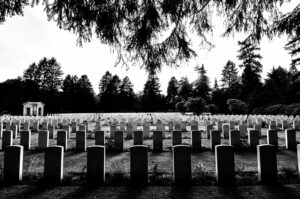
There are many variations in customs among various Orthodox jurisdictions, so I will no doubt leave out some things. But we will consider the basic outline of events of an Orthodox believer’s repose, from death to burial and beyond.
At the Time of Death
When an Orthodox Christian reposes, whether at home, in the hospital, or in a care facility, the family calls the priest to come. He will want to offer a short prayer service, perhaps the Trisagion prayers or the Prayer at the Departing of the Soul from the Body. Here is one version of that beautiful prayer:
O Lord and Master and Governor of all,
Father of Our Lord Jesus Christ,
who desirest not the death of a sinner,
but rather that he may turn from his wickedness and live,
willing that all men should be saved and come to the knowledge of the Truth,
we pray Thee to loose the soul of Thy servant (name) from every bond,
and to free her from every unfulfilled pledge which she has given,
granting her forgiveness of all her sins from her youth till now,
known and unknown, in deed and word,
both those which she has sincerely confessed,
and those which she has concealed through forgetfulness or shame.
For Thou alone loosest bonds and restorest the downtrodden,
Thou art the hope of them that are in despair,
mighty in forgiving the sins of every creature who puts his trust in Thee.
O Lord, the Lover of mankind,
bid her to be released from all the bonds of sin and the flesh.
Receive in peace the soul of this Thy servant (name)
and give her rest in Thy eternal dwelling with all Thy Saints,
by the grace of Thine only Son our Lord and God and Saviour,
Jesus Christ, with Whom Thou are blessed together with Thine all-holy,
gracious and lifegiving Spirit now and forever and unto ages of ages. Amen.
A long tradition in the Church is the reading of psalms over the Tomb of Christ on Great & Holy Friday night until the Holy Saturday service. Not every parish is able to do this, but this tradition remains alive with the death of an Orthodox Christian, as the psalms are read over the body from the time of death until the funeral service. These psalm readings are not always continual—You can see the practical and logistical problems here, with people’s schedules, commitments, and long commuting distances. But we do what we can.
The family can take turns reading the psalms aloud until the priest arrives. If your parish is blessed with a burial society, a group of volunteers who prepare the dead body for the funeral, one of them can read aloud while the others take care of other tasks.
What does preparation involve? In the podcast episode “Initial Preparation of a Body for Burial,” Dn. Barna puts the question into perspective:
Take a moment and imagine that you have been called to greet the king. What would you do? You’ll take a bath or shower, you’ll wash your hair, maybe get a haircut, shave, clean your nails, and maybe put on a little perfume.

This is what his team does, whether at home or in a facility. The body is respectfully covered at all times, just as the person would be when still alive, and is washed from head to toe and anointed with fragrant oil. During this entire process, which also includes dressing and preparing the body for the casket, psalms and prayers are read aloud.
During the preparation time, family members may stay, or they can leave the room if they are too upset. However, Dn. Barna says, “Those who do stay are amazed at the power of this simple service that we offer to the deceased and to the family.”
Deacon Barna notes that the most common hour for a natural death is at 3 a.m., which is the lowest ebb of activity for the body. It can be difficult to notify friends and family at this hour, and your options can be limited. But many audiobook versions of the Bible are available, and it is possible with a smartphone to allow continual psalm reading until loved ones arrive.
The body can be prepared by volunteers, the family, or by funeral home staff. Ideally a standing vigil around the body of the reposed should be at church, with the all-night vigil and reading of the Psalms up until the funeral.
However it happens, and within our unique circumstances, the overarching point is that the body is never left alone, from point of death until burial. I’m willing to bet that this ideal is rarely achieved in the US. But the beauty of the practice, and the honor and respect that it shows for the brother or sister who has reposed, is quite moving in its humanity and faith.
This is a great day, it is better than all the other days of my life, for today my soul departs from bodily suffering and goes to rest in its heavenly habitation. Today my body will find respite from its many labors and illnesses. Today the light of my rest will receive me. — St. Mark of Thrace, Eternal Mysteries Beyond the Grave, p.74
The Trisagion Service
Before the Funeral Service itself, the brief Trisagion or “Thrice-Holy” Service is served at the place where the deceased lies. This service derives its name from its beginning with the familiar prayer, “Holy God, Holy Mighty, Holy Immortal, have mercy on us,” repeated three times. After the initial prayers, four hymns are chanted asking the Lord to give rest to the deceased among those who have already been perfected in the faith. A litany follows and is concluded with a prayer that includes again the petition to the Lord to grant rest to the deceased, asking for the forgiveness of his or her sins. Before the service is concluded, the faithful sing, “May your memory be eternal.”
Between Death and the Funeral
How much time elapses between the death and the funeral? In the centuries before refrigeration was available, the funeral occurred very quickly—perhaps the next day. I have seen a week or more elapse, especially when family and loved ones live hundreds or thousands of miles away. Such situations would require embalming of the body.
With proper refrigeration and the use of dry ice, the body of the reposed can remain in good condition for up to three days, from what I understand. I would definitely consult the experts in this matter. The delay of a few days before burial gives time for visitation, expressions of grief, and coming to terms with the loss of a loved one. And on the evening before the funeral service, the Trisagion Service is chanted at the funeral home or in the church.
The Body during the Funeral
Traditionally, the Liturgy of the Deceased should be served before the funeral, but this is no longer common parish practice, at least in the US. With or without the Liturgy beforehand, at the church, the coffin or casket, which remains open in most cases, is positioned with the feet facing the altar. The body is positioned so that if he or she sat up, the believer would be facing the Resurrection of Christ in the East.
Why the open casket? Because we aren’t afraid of death. We know and worship the One who has conquered death and who will welcome us into His Kingdom. Adults often request closed caskets when their parents have died, especially if they have not honestly faced their own mortality. But many priests have noticed that children who have grown up in the Church don’t have this same fear of death.
How is the deceased clothed? Nowadays dress clothes—a Sunday dress for women, a suit and tie for men—are typical, but they are not necessary. A more appropriate covering for the Orthodox Christian is a white baptismal gown, worn in preparation for the resurrection of the dead.
As far as the casket is concerned, a topic we touched on last time, the simpler, the better. I talked about biodegradable coffins or shrouds in terms of returning to the earth, but there are spiritual reasons for simplicity also. In the YouTube video “Funeral Practices in the Orthodox Church,” from The Orthodox Experience with Fr. Michael Lillie, Fr. Michael notes that our burials should reflect how we live our lives: in simplicity, without extravagance. As I mentioned last time, simple coffins decorated with Orthodox crosses and prayers are available from monasteries. Also, a wooden box or coffin is much cheaper than a casket. Fr. Michael advises, “If you are a wealthy person, the money saved on the funeral should be given away as alms. We should die as Christians, and so we shouldn’t have fancy funerals lest we sin even in death!”
In most parishes, the casket is placed in the center of the church, which in traditional Orthodox architecture would locate the reposed under the dome and the icon of Christ Pantokrator. This is a beautiful practice with great symbolic meaning. The Pantokrator, or “All-Ruler,” icon shows Christ as Creator, Savior, and Judge, looking down on the deceased with compassion as we remember His judgment. His hand is raised in blessing, and He holds the Gospel book, the good news of salvation.
In the funerals I have attended, the body of the reposed is positioned on the solea, near the altar. I assume that space considerations come into play here.
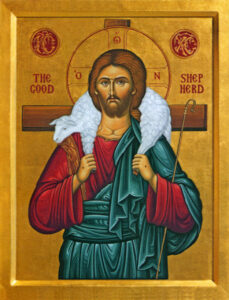
A hand cross is placed inside the casket, perhaps attached to the inner lid. An icon of Christ or the patron saint of the deceased is often next to the body.
The Funeral Service
In his homily “On the Holy Martyrs Bernice and Prosdoke the Virgins and their Mother Domnina,” St. John Chrysostom writes,
The Jews of the Old Testament wept for Jacob and for Moses for forty days. Today, however, during the funeral of the faithful, the Church raises hymns and prayers and psalms. We glorify and thank God, because “He crowned the departing,” because “He relieved the pains,” because “He expelled the fear,” and has the deceased believer near Him. This is why the hymns and psalms reveal that in the event of death there is pleasure and joy following the glorious Resurrection of the Savior Jesus Christ. For the psalms and hymns are symbols of joy, according to the Apostolic word: “Is any cheerful? Let him sing praises” (James 5:13). This is why we sing psalms over the dead—psalms which move us to have courage and not to despair over the death of our brother.
Father Nektarios Morrow describes the Church’s funeral hymnography as “a treasure-house of profound spiritual thoughts.” The basic parts of the funeral service can be traced back to the fifth century, and Fr. Morrow writes in his article “The Funeral Service of the Orthodox Church”: “With the passage of time the service has been enriched with psalms and hymns so that it has become one of the most versatile, dramatic, and impassionate services of our Church.”
The service is not an official sacrament, but it is a liturgical rite, and it gives us a healthy understanding of life and death. In my experiences of attending Orthodox funerals, I am struck each time by the physical and spiritual balance of the Church: the hymns and prayers overflow with hope of the resurrection while the body of the deceased lies in our midst. The reality of death is not avoided or sugar-coated. At the same time, we rejoice in the triumph of Jesus Christ, who has conquered death by death.
Father Morrow writes,
The Service is not only an opportunity to express our love for our loved one who has fallen asleep; it is also a sacred time, a marvelous opportunity for reflection and inner meditation on our own relationship with God and on the orientation of our lives,” “When we reflect on the sublime thoughts of the Funeral Service our souls become contrite, our hearts are softened, and we pray fervently for the forgiveness and the repose of the person who has been transferred to the life beyond the grave. Also, we who are still alive are beckoned to live the rest of our lives in repentance and in full dedication to Christ.
Psalms & Hymns
The funeral service of the Orthodox Church includes selections from Psalm 119 (118 in the LXX) in three stanzas. In Greek this psalm is called the Amomos (blameless) because the first words are, “Blessed are those whose way is blameless, who walk in the law of the Lord.”
Over and over we sing verse 12: “Blessed are You, O Lord, teach me Your statutes (or commandments)!” Why are these words repeated during a funeral? Obviously it’s a little late for the one who has reposed to learn the Lord’s statutes. The refrain is for us—those present in the flesh. Once again, the Church returns us to remembrance of death. Our dear brother or sister lies in our midst and has departed this life. We are reminded that our time on earth is short, and we must seek the Lord and learn to walk in His ways.
We also sing the hymn that is familiar from memorial services throughout the year:
With the saints give rest, O Christ, to the soul of Thy servant where sickness and sorrow are no more, neither sighing, but life everlasting.
While we chant this hymn, the priest censes the body of the deceased, the faithful who are present, the Holy Altar Table, and the icons.
Read the words of the Troparion (I believe this is the OCA translation):
Thou only Creator Who with wisdom profound mercifully orderest all things, and givest unto all that which is useful, give rest, O Lord, to the soul of Thy servant who has fallen asleep, for he has placed his trust in Thee, our Maker and Fashioner and our God.
We pray for ourselves and for the one who has passed. Father Thomas Hopko writes in Volume 2 of his series, The Orthodox Faith, that these hymns “meditate on the tragedy of death and the mercy of God, and petition eternal life for the person who is ‘fallen asleep.’” Regarding the hymns known as ideomela that are chanted in each of the eight tones, Fr. Hopko continues, “These hymns and their changing melodic modes express the mixed emotions of grief and consolation that come from the loss of a loved one and in our affirmation of our hope in God’s promise of rest for the departed and eternal life.”
Each hymn from the funeral service is worthy of quiet contemplation. They are powerful and rich. I’ll include just two of them:
Where is the pleasure in life which is unmixed with sorrow? Where the glory which on earth has stood firm and unchanged? All things are weaker than shadow, all more illusive than dreams; comes one fell stroke, and Death in turn, prevails over all these vanities. Wherefore in the Light, O Christ, of Your countenance, the sweetness of Your beauty, to him (her) whom You have chosen grant repose, for You are the Friend of Mankind. (from the GOA)
And, from the OCA,
I weep and lament when I think upon death, and behold our beauty created in the likeness of God lying in the tomb disfigured, bereft of glory and form. O the marvel of it! What is this mystery concerning us? Why have we been delivered to corruption? Why have we been wedded unto death? Truly, as it is written, by the command of God Who giveth the departed rest.
This entire funeral service is a true exercise in the remembrance of death. And I wonder, How can we understand the power of the Gospel if we give little thought to death?
The Epistle & Gospel Readings
The epistle for the funeral service is 1 Thessalonians 4:13–18, which reminds us not to sorrow as those who have no hope, and looks to the coming of the Lord, when “the dead in Christ will rise first.” This is followed by the Gospel reading of John 5:24–30, which includes the verses:
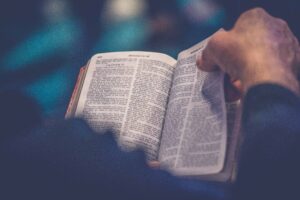
Most assuredly, I say to you, the hour is coming, and now is, when the dead will hear the voice of the Son of God; and those who hear will live. . . . Do not marvel at this; for the hour is coming in which all who are in the graves will hear His voice and come forth—those who have done good, to the resurrection of life, and those who have done evil, to the resurrection of condemnation.
Alternate readings are also available, and Fr. Hopko notes the commonality among the various readings: “All of these passages reflect the Church’s belief in the reality of Christ’s death and Resurrection and of the benefits that we derive from them, namely, the resurrection of our body on the last day, and the promise of incorruption and immortality.”
But . . . Where Did the Eulogy Go?
Leaving aside celebrations of life, as we should, the more traditional Christian funeral services in the West include the presence of the body in a casket or cremains in an urn. They also usually include something that is not practiced in the funeral service of the Orthodox Church: the eulogy. Although the priest will often include some personal words about the brother or sister who has fallen asleep in the Lord, no one else is allowed to speak during the service itself.
At first this seemed odd to me. It felt like an omission, and made the funeral seem a little bit impersonal. Maybe a lot impersonal, with ritual valued over words of consolation for family and friends.
Then I remembered where we are gathered. An Orthodox funeral service always takes place in an Orthodox parish. Occasionally an exception is made, such as when the person dies far away from an Orthodox church. Then, with the permission of the bishop, the service can be held in a heterodox Christian church.
If you haven’t noticed by now, let me make it clear: There is no open-mic night in an Orthodox church. The closest we get to unscripted speeches on a Sunday occurs after the Liturgy is completed, when a layperson makes an announcement about parish activities—with the permission and oversight of the priest. There is no extemporaneous prayer, no “sharing,” no giving of testimonies.
Why not? Because, when we enter the nave, we are not merely entering an artfully decorated auditorium. We are entering into the worship of heaven, among the saints and angels. We are in a holy place.
It’s relevant to remember that the English word “orthodoxy” is derived from the Greek words orthos and doxa. Orthos means “straight”—as in orthodontics, which has the goal of straight teeth—and doxa, which means “teaching.” Of course, there are many nuances to these words, but orthodoxy as “right (or straight) teaching” is close enough. The Church is very serious about handing down the true teaching of the apostles—so much so that a priest serves only with a bishop’s permission and oversight.
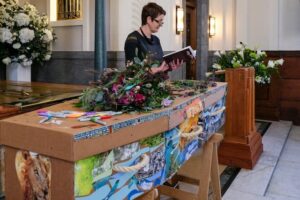
Given the Church’s commitment to true, unchanging doctrine, the idea of allowing a layperson’s eulogy as part of the funeral service carries great risk. It’s easy to imagine Uncle George standing up and saying tearfully, “Kids, Aunt Sarah is one of the angels now.”
Really? How did that happen?
Or, worse, “I can just see Cousin Dave up in heaven now, laughing, smoking a cigar, and flipping the bird at all of us.”
You know stuff like this would happen. I’ve heard a few eulogies in my time, and they’re usually marked by nostalgia, in-jokes, and sentimentality—not theological rigor.
The time for reminiscences and sharing of stories comes after the funeral service at the mercy meal, or perhaps beforehand, such as during a vigil in the home or funeral chapel.
The Dismissal
The Dismissal prayer at the end of the service again centers on the hope of the resurrection. The priest calls on the intercessions of the holy Theotokos and the saints, including St. Lazarus, whom the Lord raised from the dead. Then together we sing the familiar words, “May your memory be eternal” or, in the GOA translation, “Everlasting be their memory.”
Now, I always assumed this short song, “Everlasting be their memory,” was meant for those of us still alive in the flesh to carry on the memory of those who have reposed. But Fr. Hopko points out that the song asks for God, not us, to remember the dead, because only God’s “eternal memory” keeps man alive. He writes,
This most famous and final of the Orthodox funeral hymns is the prayer that the departed be eternally alive in the “eternal rest” of the “eternal memory” of God—all of which is made possible and actual by the resurrection of Jesus Christ, which is the destruction of the Pit of Death by the splendor of Divine Righteousness and Life (see Ps 88; Hos 13.14; 1 Cor 15; Eph 4.9; Phil 2.5–11; 1 Pet 3).
The Kiss of Peace
This is the final farewell to the one who has reposed—and the part of the service that can be most jarring to modern Westerners. The people file forward to look upon the body of the deceased one last time while the choir or chanters sing an invitation to kiss the faithful one who has died and to pray to the Lord to give rest to him or her.
Father Morrow writes, “The kiss given to the deceased is an expression of love for the departed, but it is also an affirmation that the one who has fallen asleep is worthy of the fulfillment of God’s promises, having lived a life of faith and known the grace of God.”
Anointing of the Body
Finally, the priest anoints the body in the sign of the Cross with oil and earth. (I was never aware of this.) As the priest anoints with the oil he quotes Psalm 51:7: “Sprinkle me with hyssop and I shall be clean. Wash me and I shall be whiter than snow.” As the priest anoints the body with earth, he says: “The earth is the Lord’s, and the fullness thereof; the world and all that dwell in it “ (Psalm 24:1). “You are dust and to dust you shall return” (Gen. 3:19).
“For a true Christian death is merely like a sleep until the day of resurrection, or like birth into a new life.” — Righteous John, Wonderworker of Kronstadt, My Life in Christ, p.282
After the Funeral
There appears to be some variation in what occurs next. I’ve read about the transport of the body to the cemetery for a graveside service, followed by a reception meal. My guess is that this is the traditional order in places where the church cemetery is nearby. But when the cemetery could be many miles away from the parish, the mercy meal is served first.
This is what usually happens in my parish. Then when it is time to take the casket of the deceased to the cemetery, the priest, chanters, and people sing hymns while the pallbearers load the casket in the hearse, and the people pile into their cars for the trip.
The reception after the funeral can occur at the parish or in the family home. The meal in the Greek tradition is called the makaria, where broiled fish is served. In the Gospel of John, chapter 21, Jesus ate broiled fish and bread with his disciples after His Resurrection, and so we eat fish as part of the mercy meal.

In the Russian tradition the mercy meal is called the pominki, which often features traditional foods such as a type of pancake called blini, and also fish, often served as a fish pie. Across the Orthodox world, kolyva is also served, a dish made of boiled wheat and various spices and ingredients, such as pomegranate, raisins, and Jordan almonds. This is yet another reminder of the Resurrection, pointing to John 12:24, where Jesus said, “Most assuredly, I say to you, unless a grain of wheat falls into the ground and dies, it remains alone; but if it dies, it produces much grain.” Kolyva is also served during coffee hour after memorials for those who have died.
At the Graveside
At the cemetery, the priest and the people commit the body to the grave to await our Lord’s return and the resurrection of the dead. Thus the burial plot typically faces East, so that if the one who reposed were to stand, they would face the Resurrection.
“A cemetery is not a place where corpses are laid, but a place where the Resurrection awaits.” — Metropolitan Anthony of Sourozh
The Trisagion Service is performed again, and after the casket is lowered, the people present are invited to put some dirt into the hole. Sometimes people perform the burial themselves with shovels, which can help in mourning process.
An Orthodox headstone is usually a cross, but municipal, city-owned cemeteries have their own rules and regulations. And now, with the burial, we have reached the end, right?
Of course not. The burial is not the end, as it is in Protestant practice. We celebrate memorial services for our dead, on many occasions, including the 40th day, the anniversary of the loved one’s repose, and on Memorial Saturdays during Great Lent. That seems like a lot of effort for people who believe that the dead are . . . out there, somewhere. But the Orthodox Church understands that there is one Church, comprised of those of us on earth and those who are in heaven. As St. Paul reminds us in 1 Cor. 13:12, we on earth “see in a mirror, dimly,” but those who have died in Christ see Him “face to face.” We “know in part,” but they are experiencing the fullness of life in His presence. And we are one.
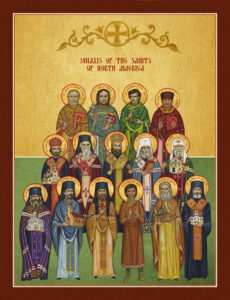
Some Final Thoughts
As I look at the traditions and rituals surrounding death and burial in the Orthodox Christian Church and compare them to the smorgasbord of practices throughout the Western Christian world, I see one important commonality. A focus on the resurrection of the dead, grounded in the Resurrection of Christ, is the most vital hope that we share. It is a distinctively Christian hope—not a hope for another chance in the endless cycle of reincarnation, a hope to lose one’s identity by being absorbed into a universal spirit, or even the finality of oblivion. It is a hope based on the reality of the God-Man Jesus, who entered into history and rose bodily from the dead. This hope, and His promise that we who believe in Him will join Him in His Kingdom, has been clearly expressed in every Christian funeral, memorial service, or celebration of life I have attended.
But beyond that most basic Christian tenet, it’s really not going too far to say that for death and the deposition of the body in the wider Christian world, “anything goes.” Holy Tradition is neither acknowledged nor followed, and, as I mentioned at the beginning, the understanding of the sanctity of the human body has been lost. In the post-Christian US, even among Christians, a truly Christian end is rare.
An Orthodox Christian death stands in stark contrast to the modern elevation of personal choice. As we have seen, the Orthodox experience of dying, death, and burial is filled with many services: bedside prayers at the time of death, Trisagion prayers, psalm readings, the funeral service, the graveside prayers. But beyond the specifics of the rituals, I would say that the primary difference between Orthodox and heterodox Christian practices surrounding death can be summarized in one word: prayer.
From the time of death until burial in the ground, the Orthodox Christian believer who has reposed is surrounded by prayer. This is incredibly beautiful, and, honestly, it just seems right. Meet and right, so to speak. Our passage from life on earth to heaven includes the prayers of the parish community to usher us into the Kingdom. It is not a do-it-yourself affair.
This blog is called Walking an Ancient Path, and the subtitle is “Living and Learning Orthodox Christianity.” So, why have I been focusing on death for four posts in a blog about living? Because an important aspect of our life in Christ, as members of His Body, is to be ready for death. As I mentioned in the previous post, Fr. Evan Armatas, host of the AFR show Orthodoxy Live, once said, “The purpose of the Church is to prepare you for death.”
We will all experience death, and we should live our lives accordingly. We spend our lives faithfully but imperfectly abiding in Christ, praying continually, and laboring to conquer our will and our passions through God’s grace and a life of ascesis. We also practice the remembrance of death as a sober reminder that our time on earth is short.
As the physical act of prostrations teaches us, we stumble and fall in our life in Christ, and by God’s grace, we get up again. And when we are thinking rightly, we face death without fear because of the joyous truth of the triumphant Paschal hymn:
Christ is risen from the dead,
Trampling down death by death,
And to those in the tombs
He has granted life.
***
Okay, we’ve done a fairly thorough job of remembering death for four blog posts. Next time we’ll talk about a wonderful part of the Orthodox Christian life: the practice of sponsoring, or godparenting, in the Orthodox Church. No one enters the Church alone. We join as part of a spiritual family within a larger spiritual family, not a collection of individuals.
I hope you can join me.
A wonderful, and helpful, series! I am very thankful for it. Even though I’ve been Orthodox for 7 years, it takes longer than that to gather more than a limited knowledge of many things (which is essentially what I have). Thanks again.
You’re welcome! I’m sorry I didn’t respond sooner–I just now saw your comment. There is always so much to learn!